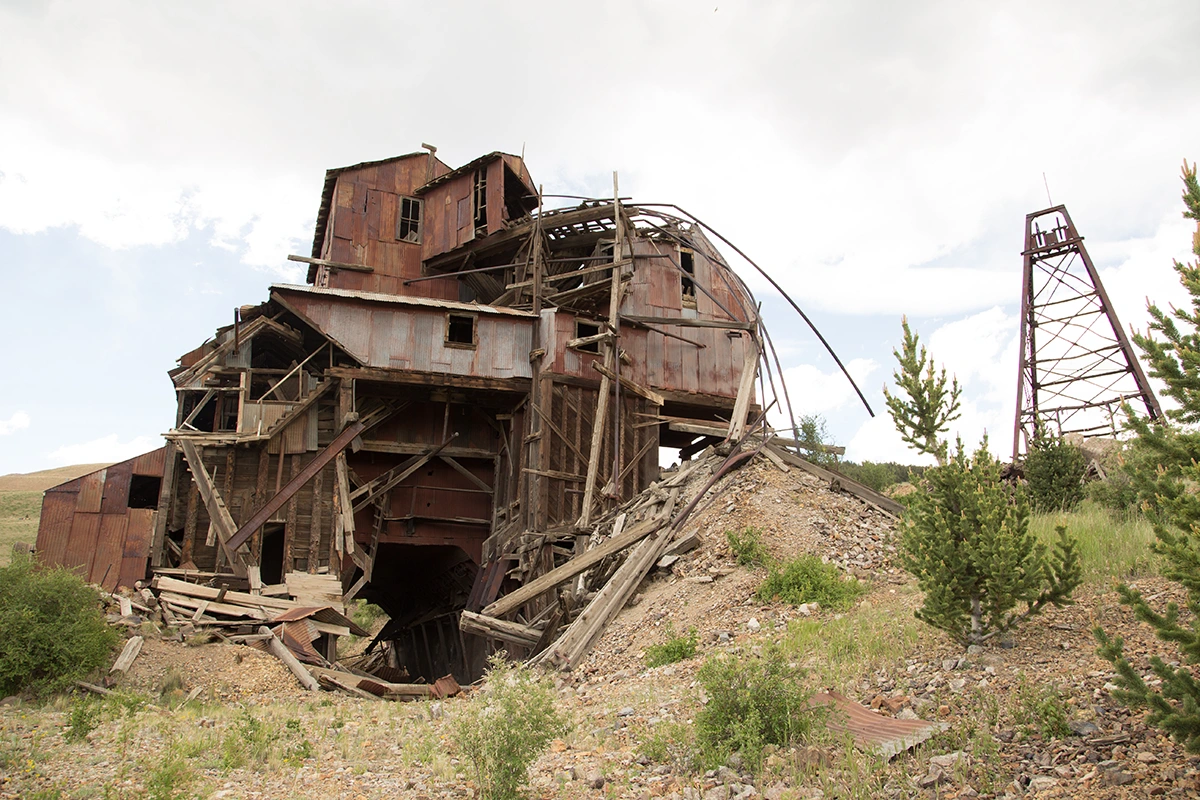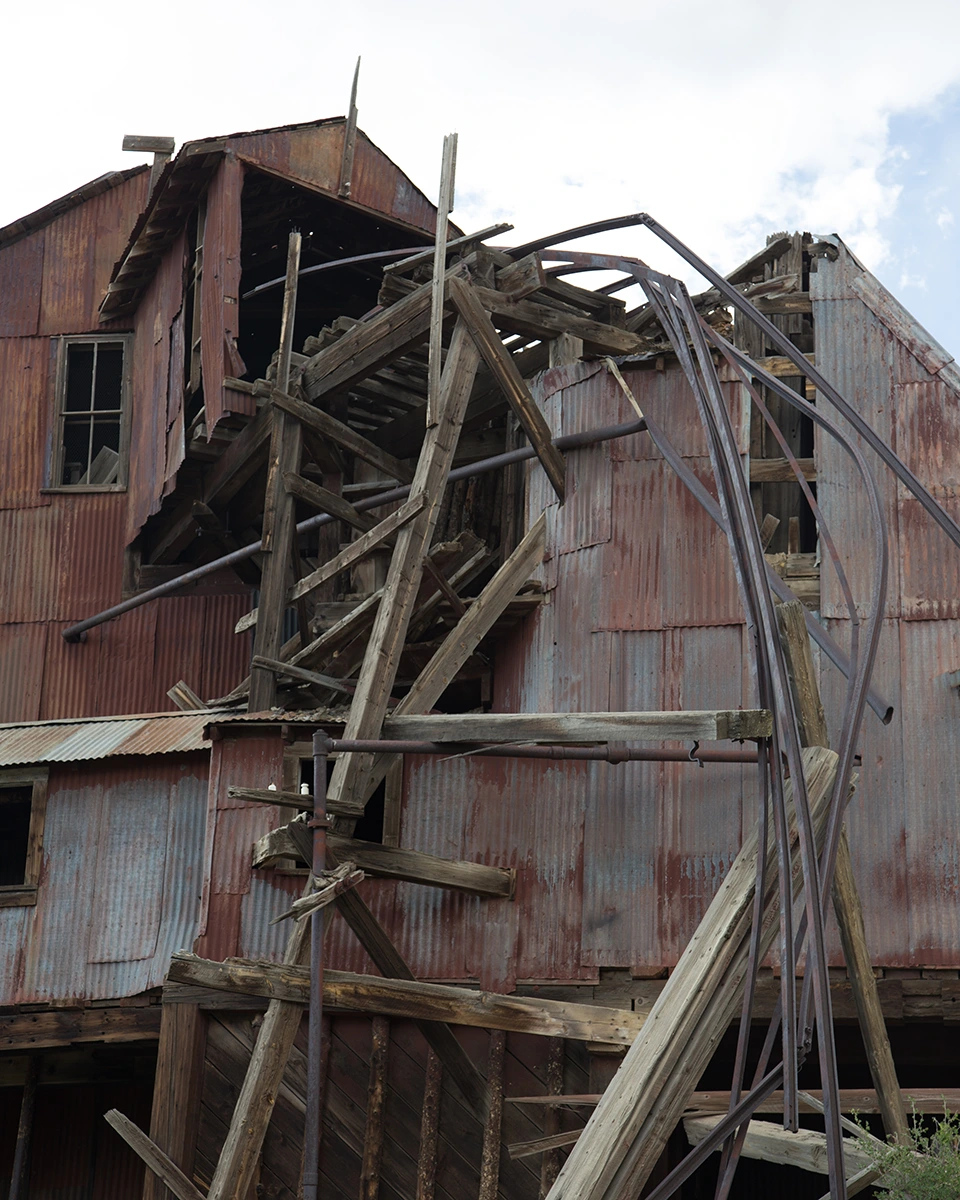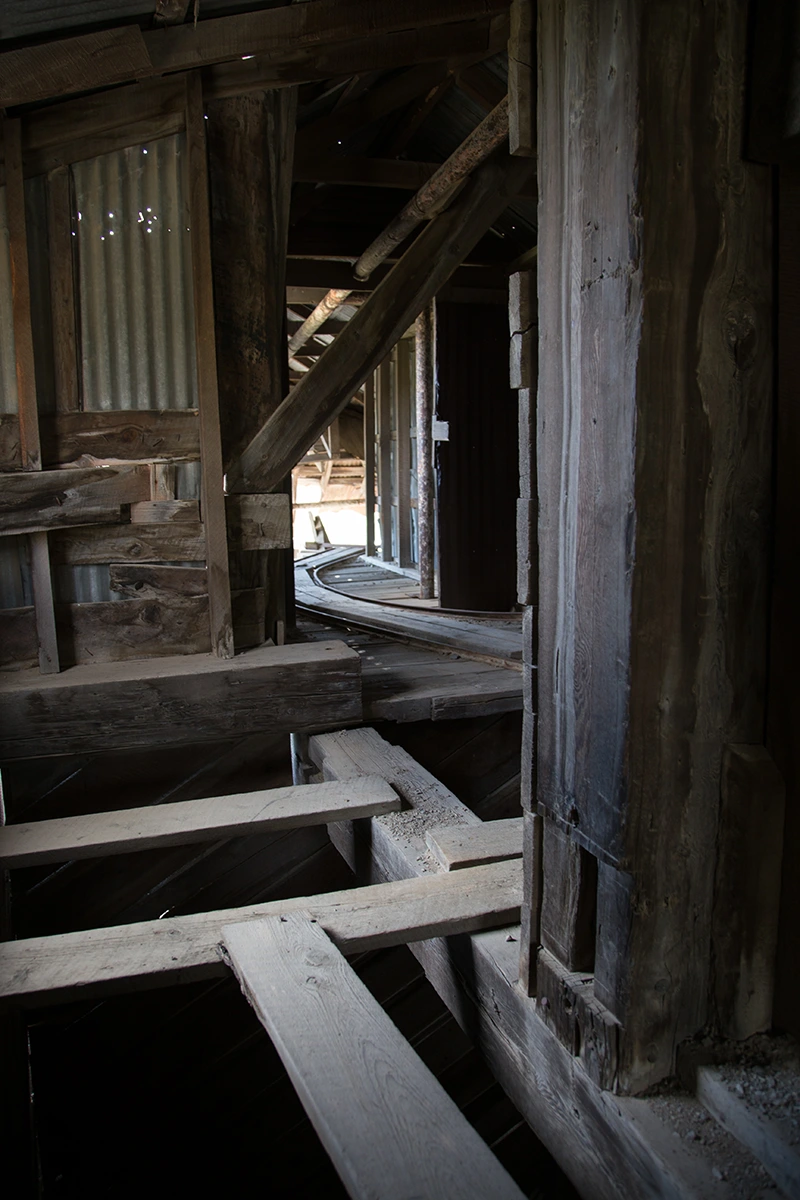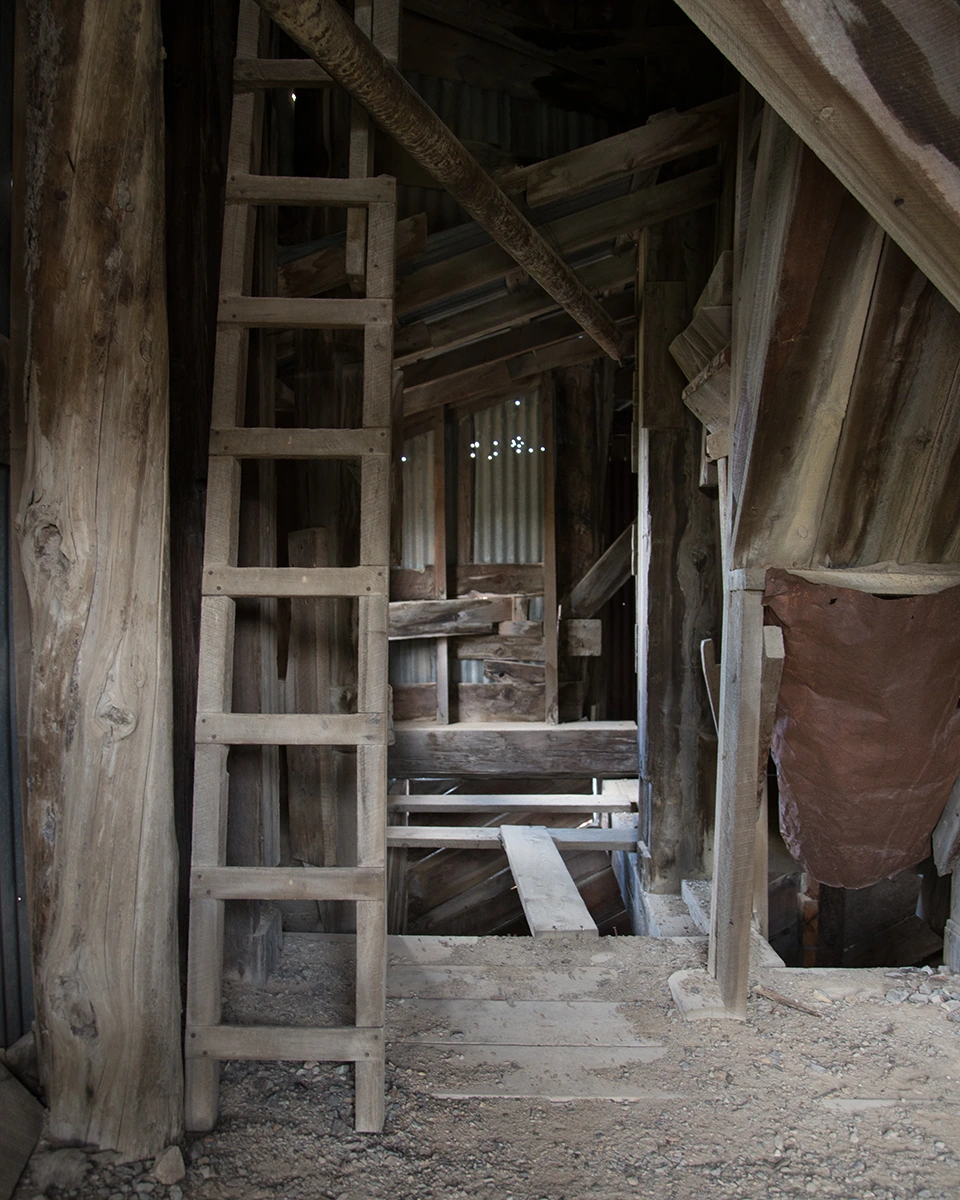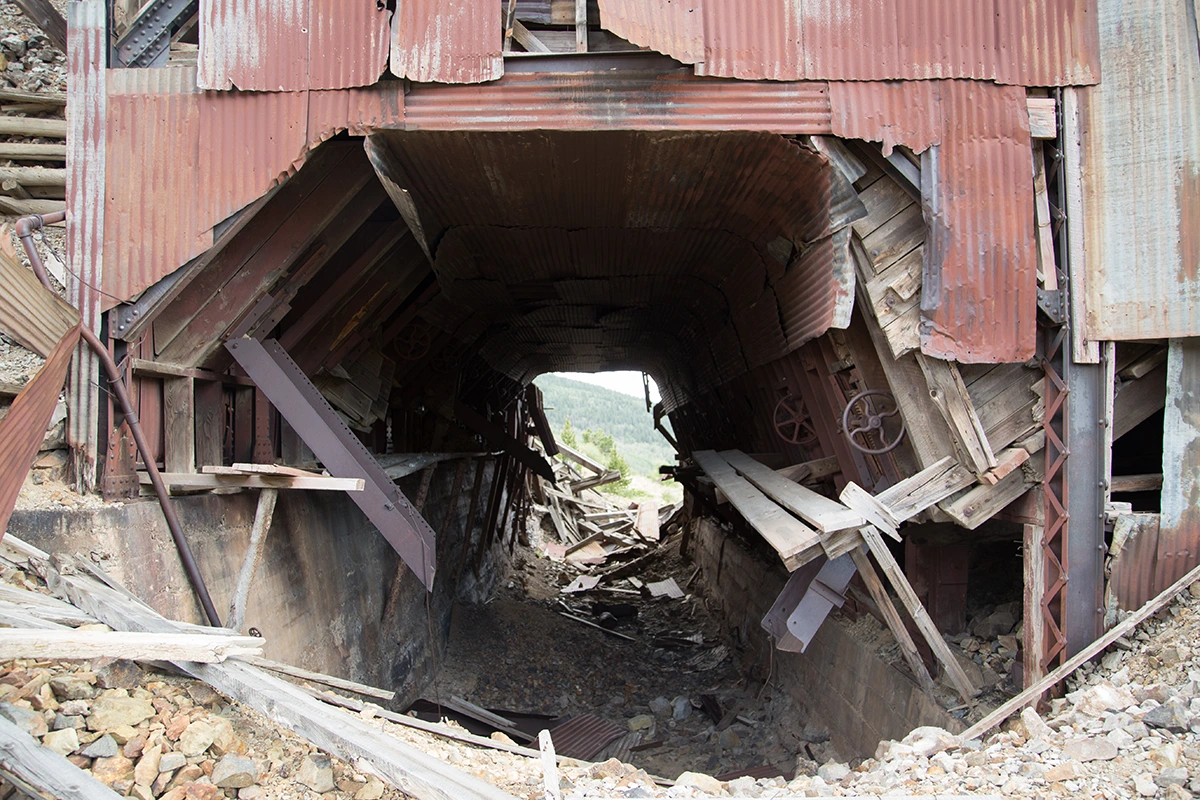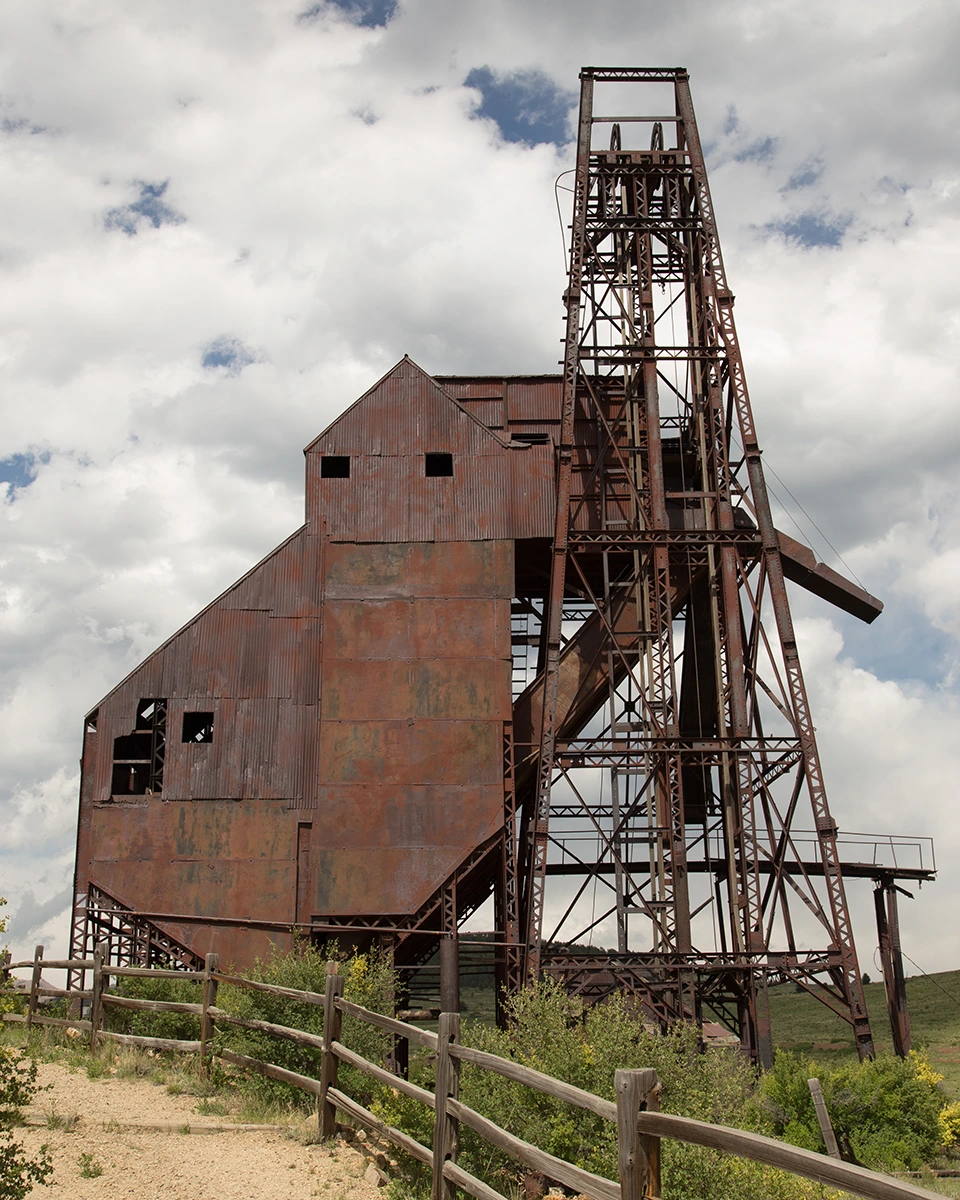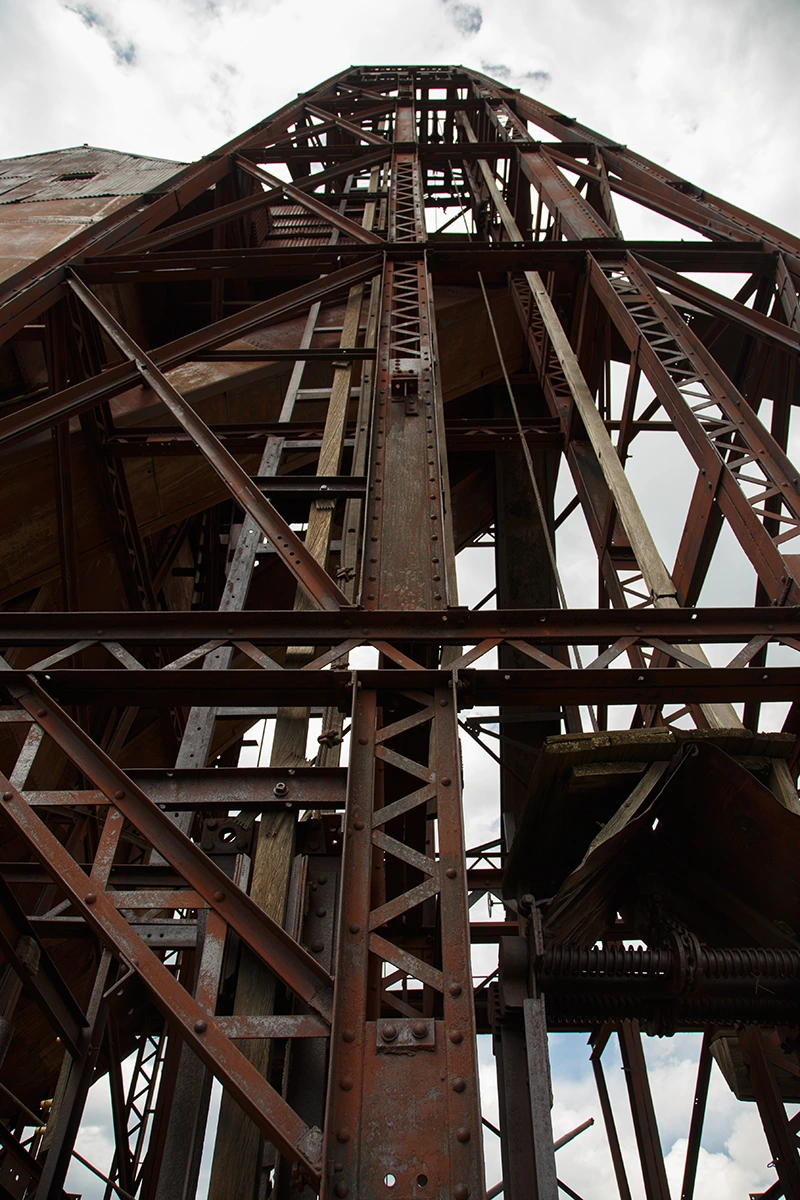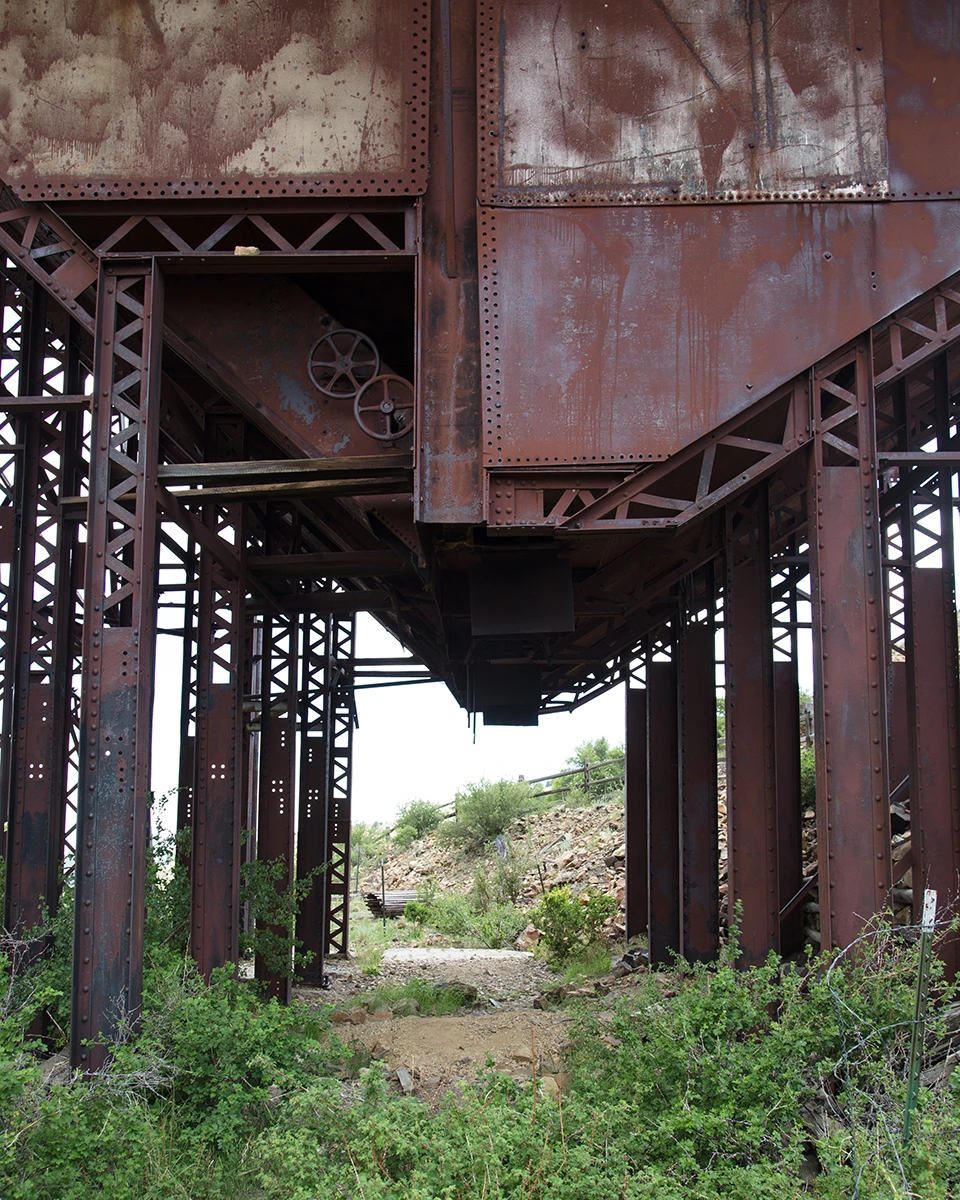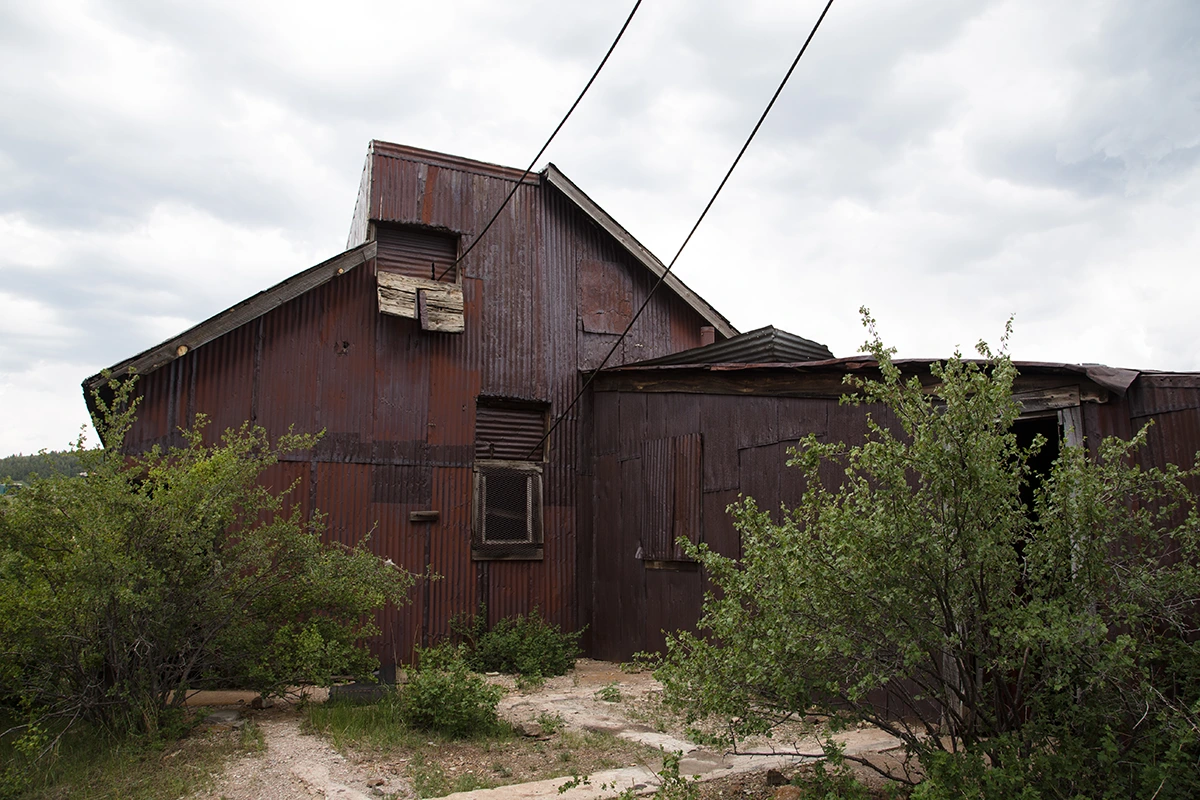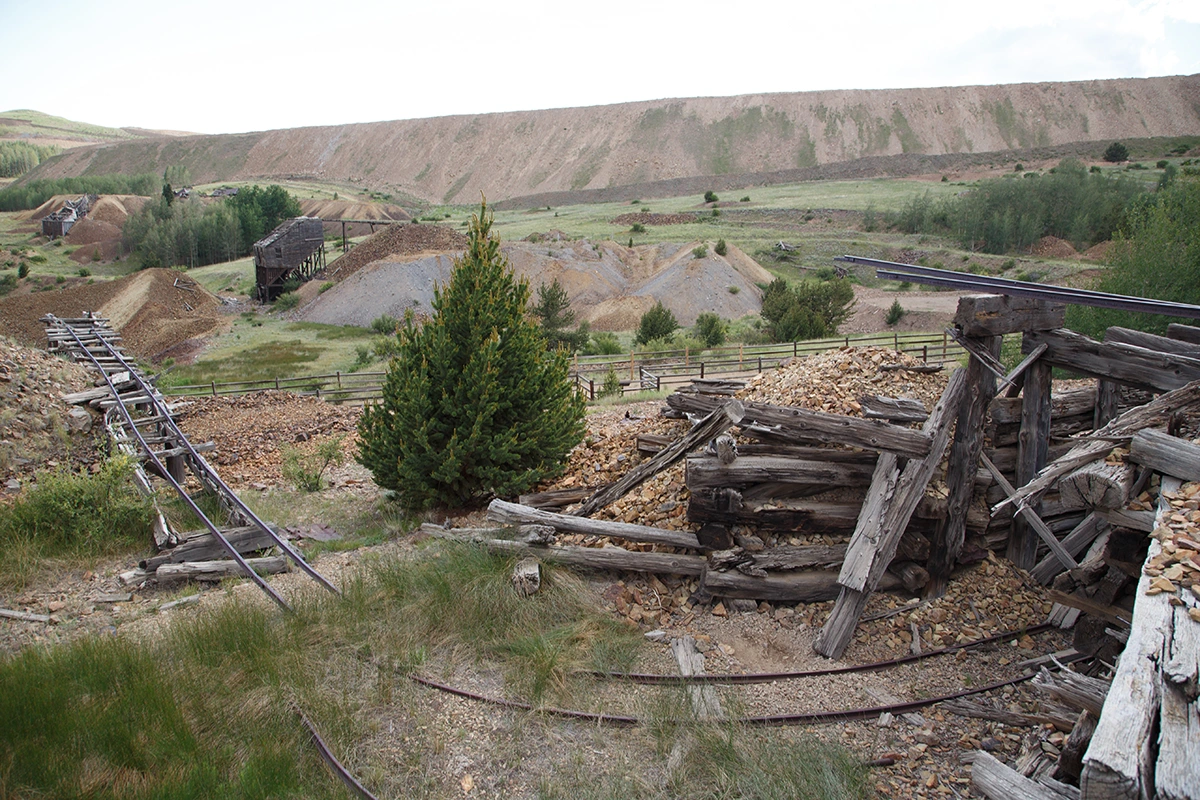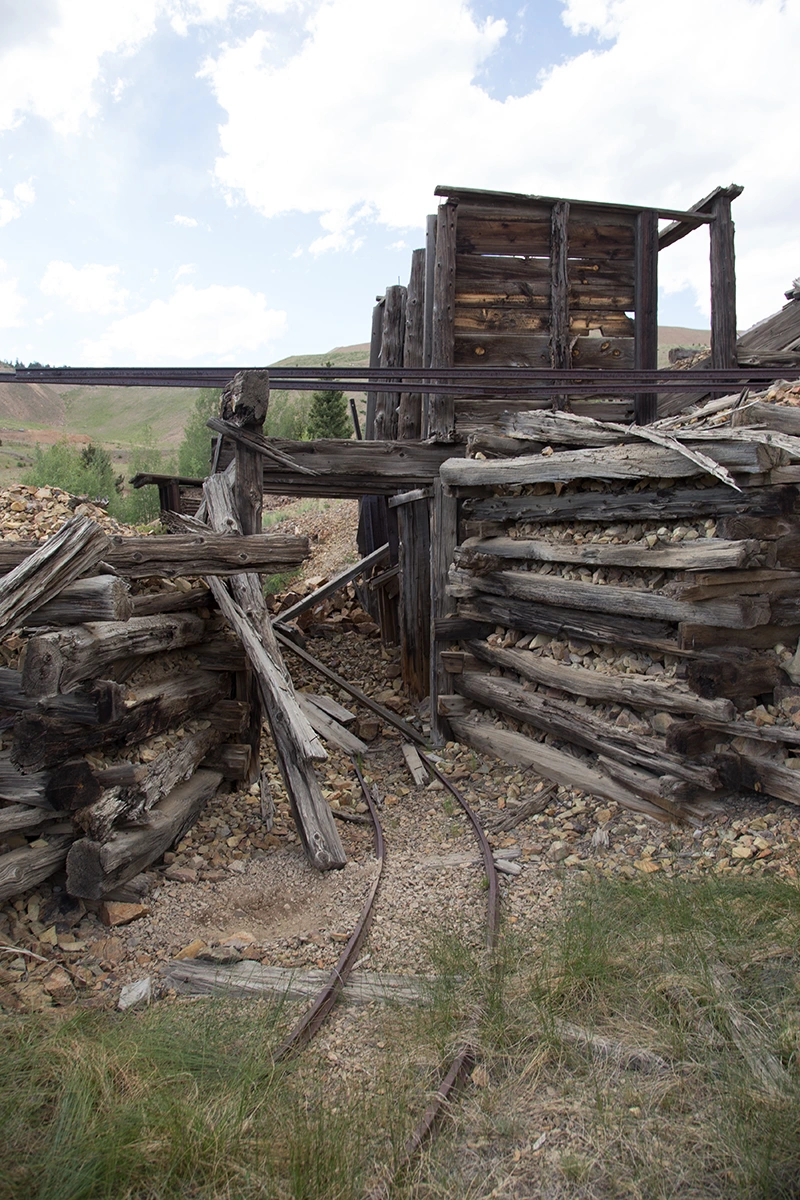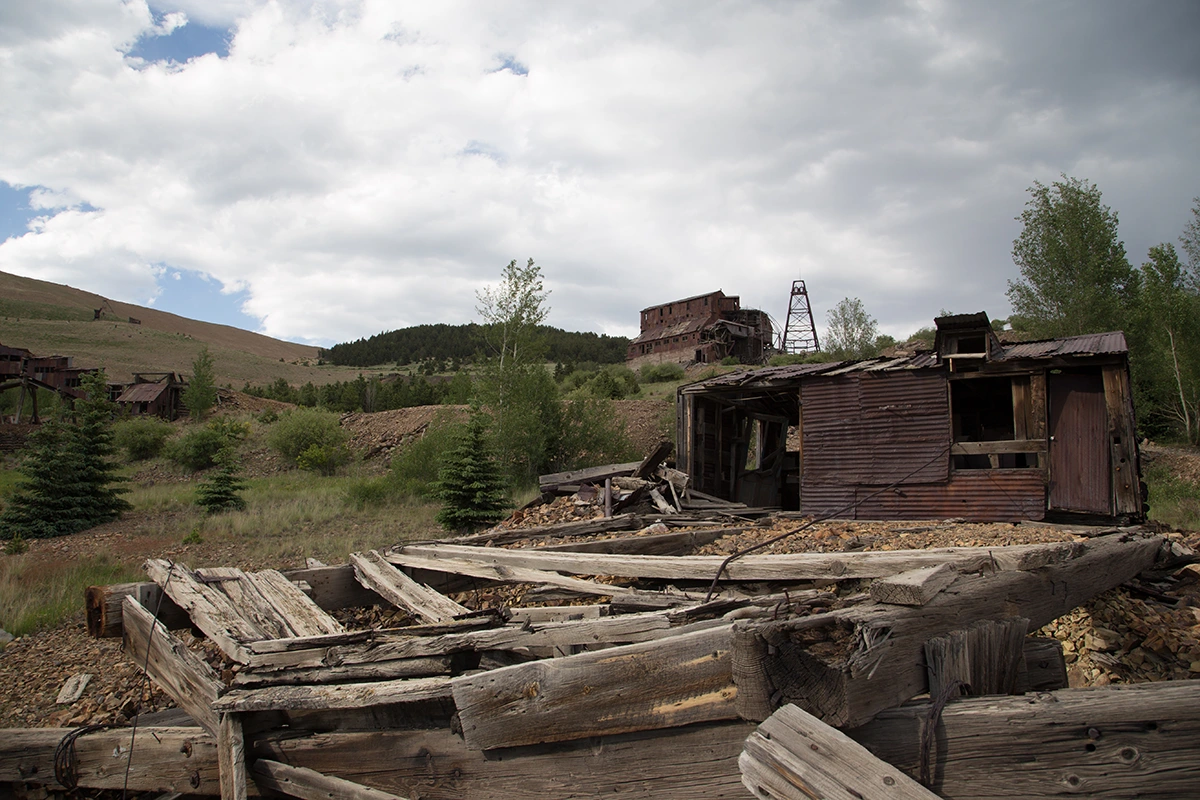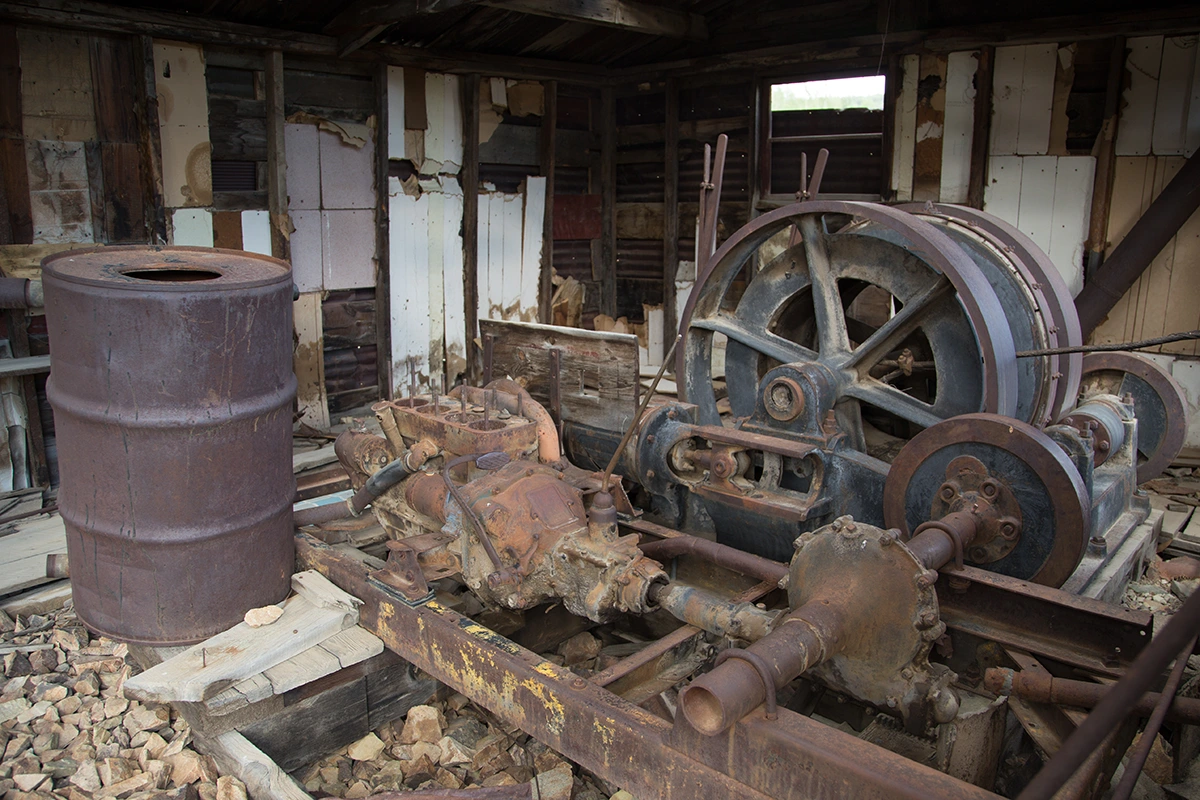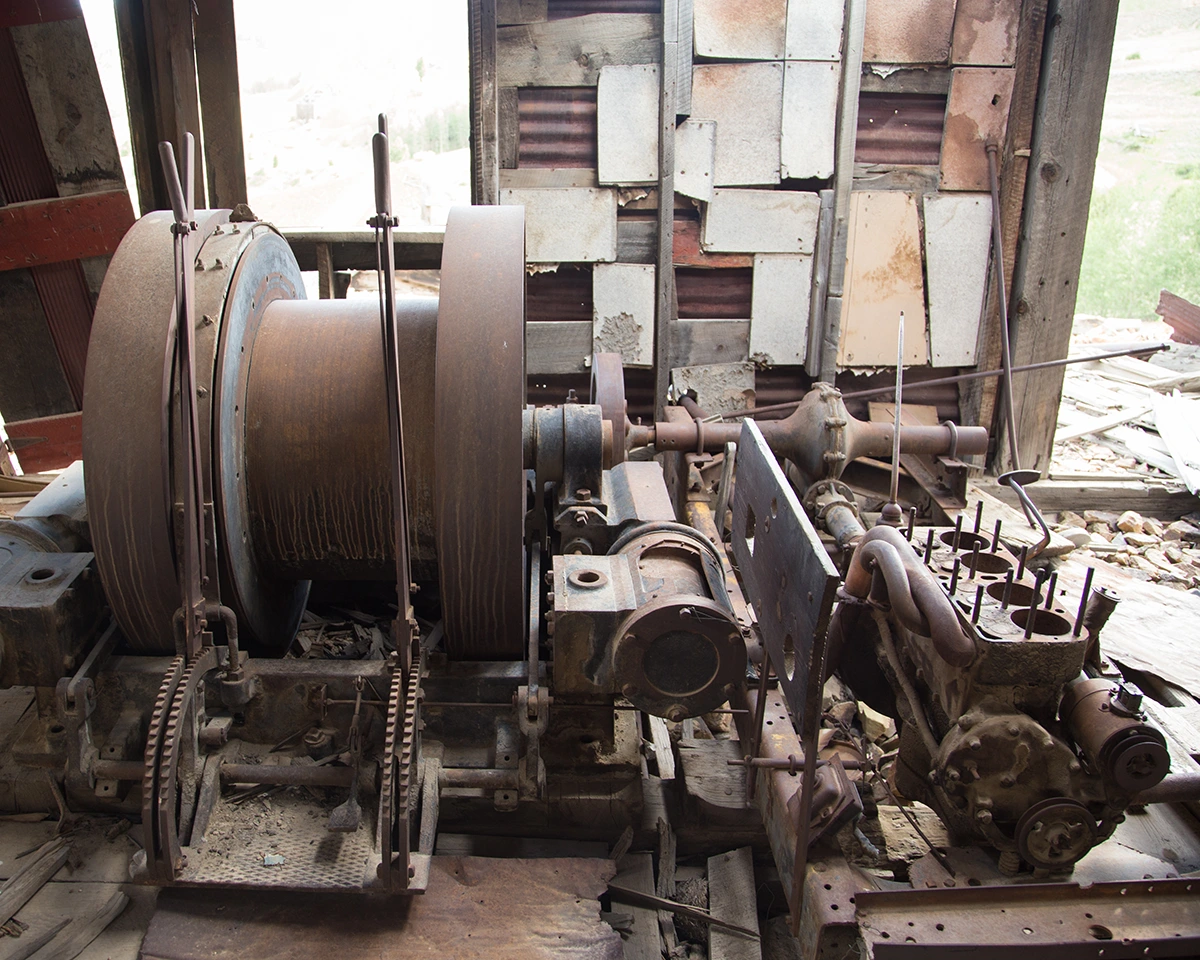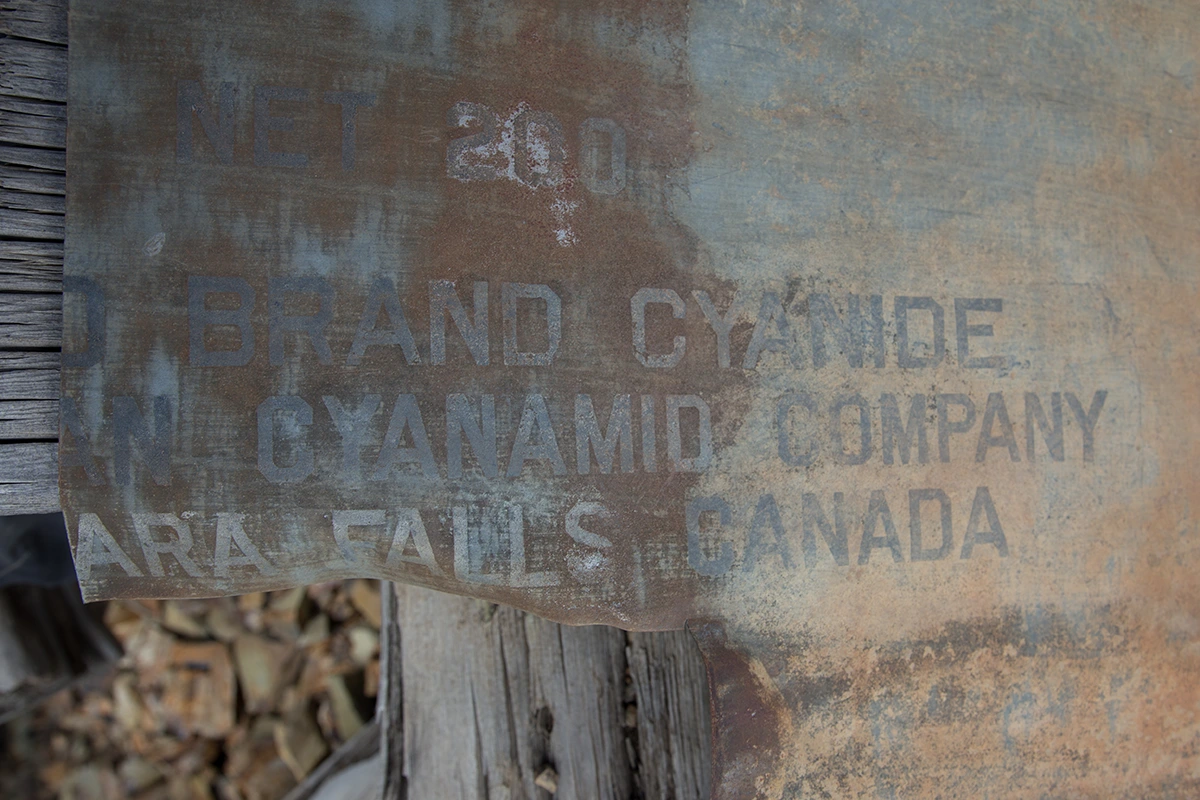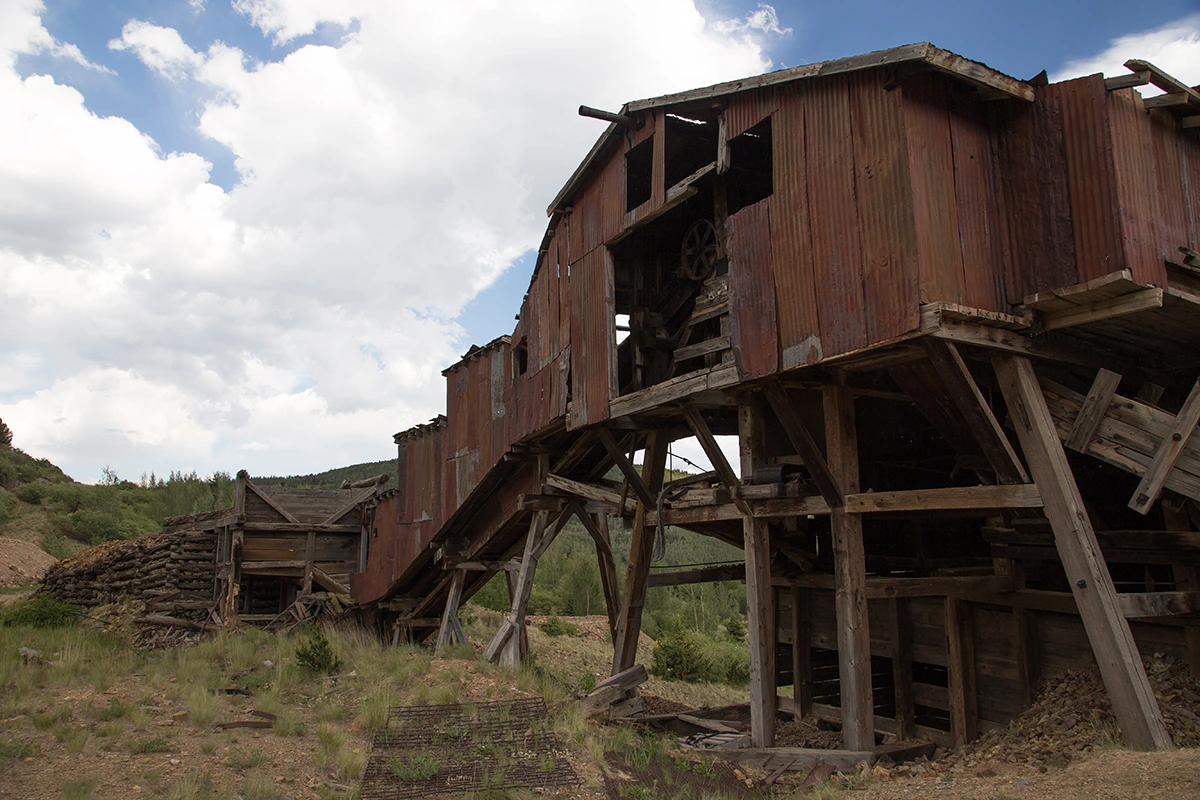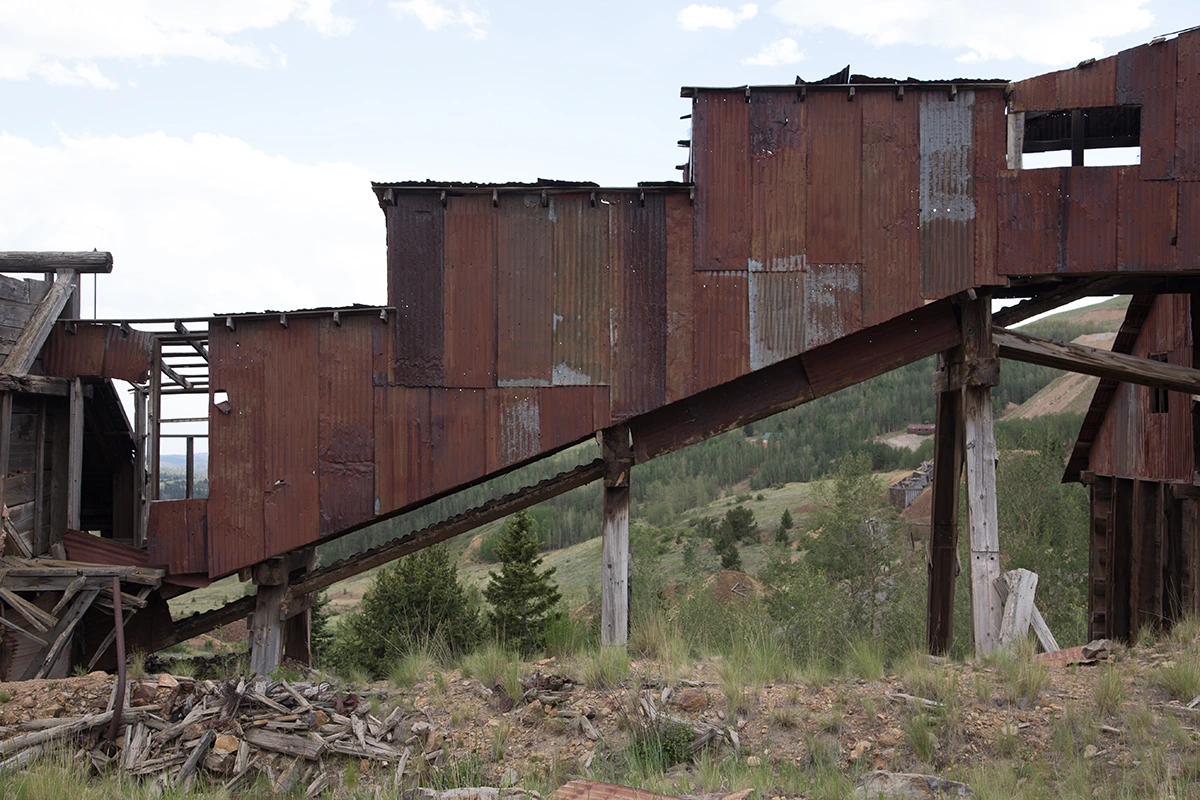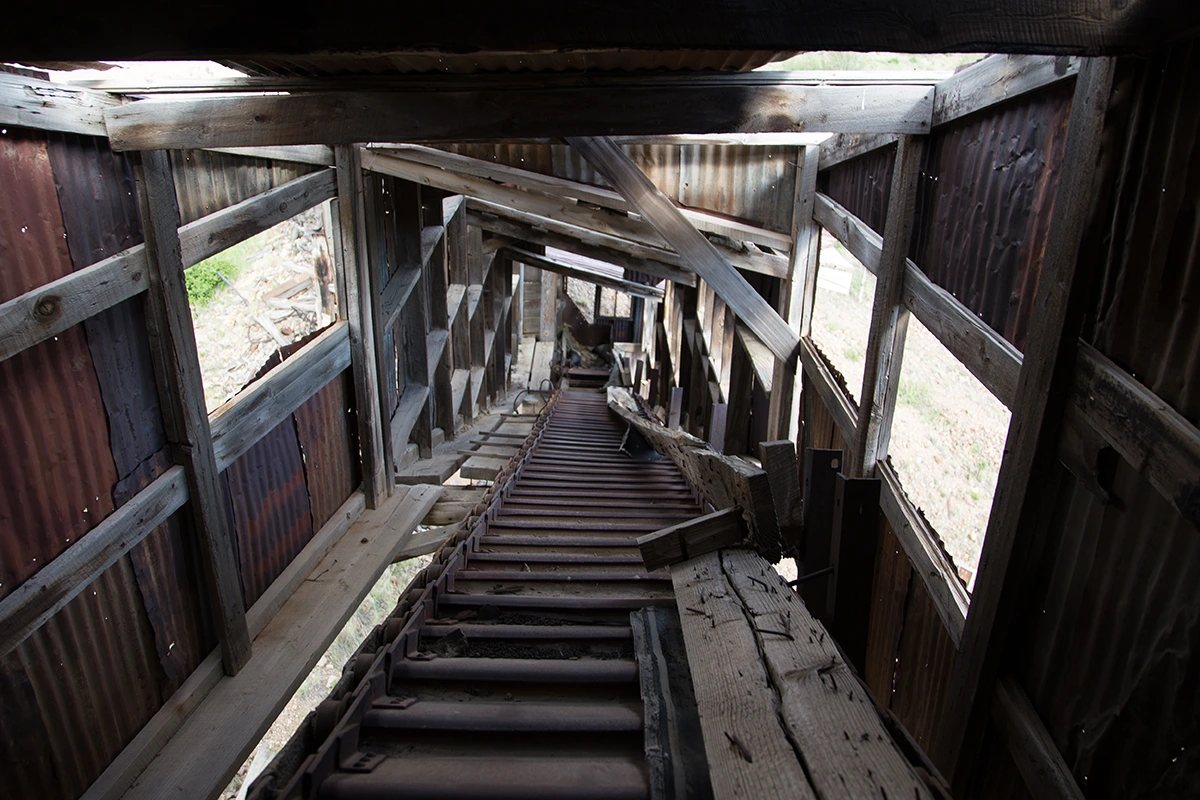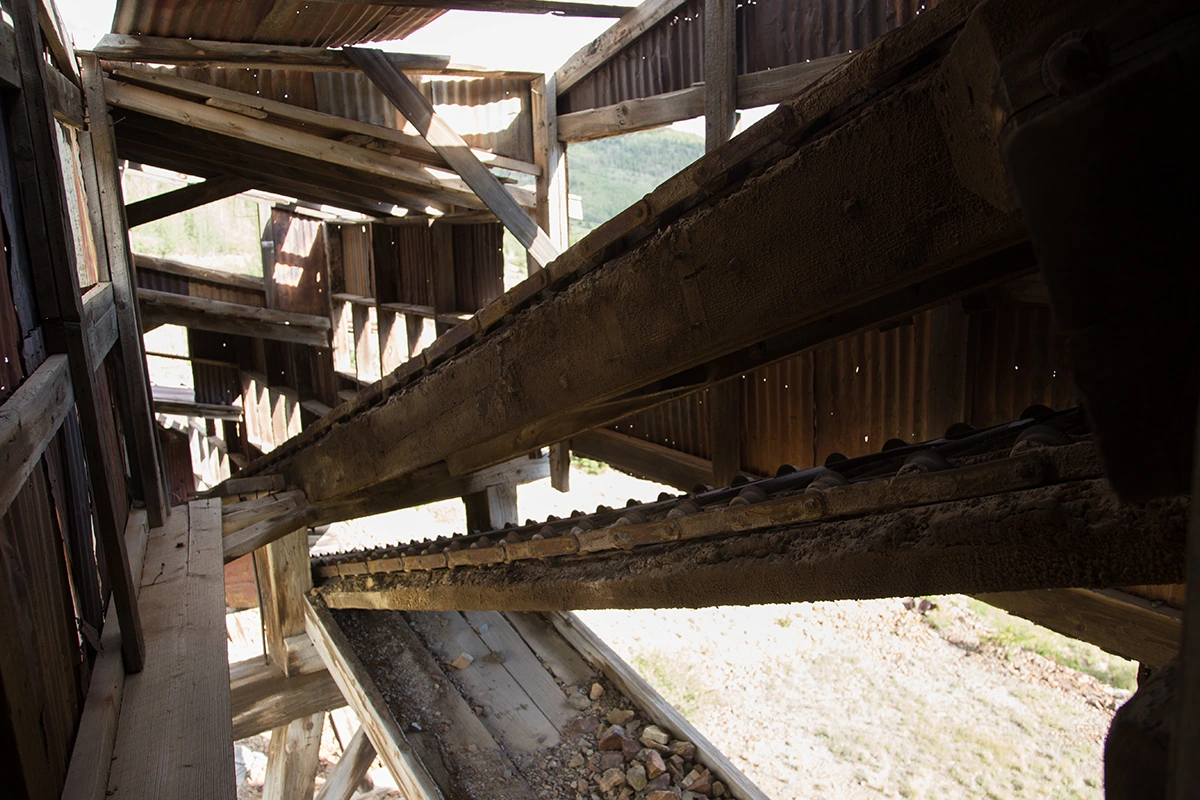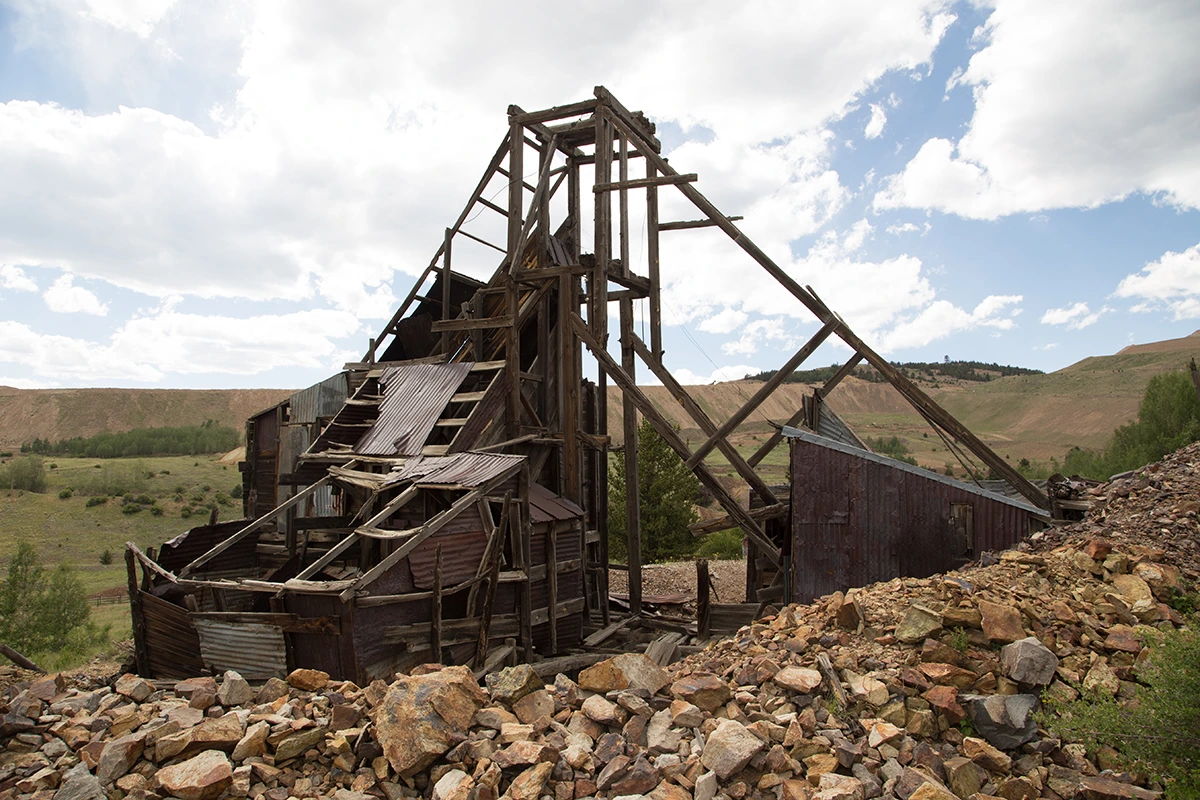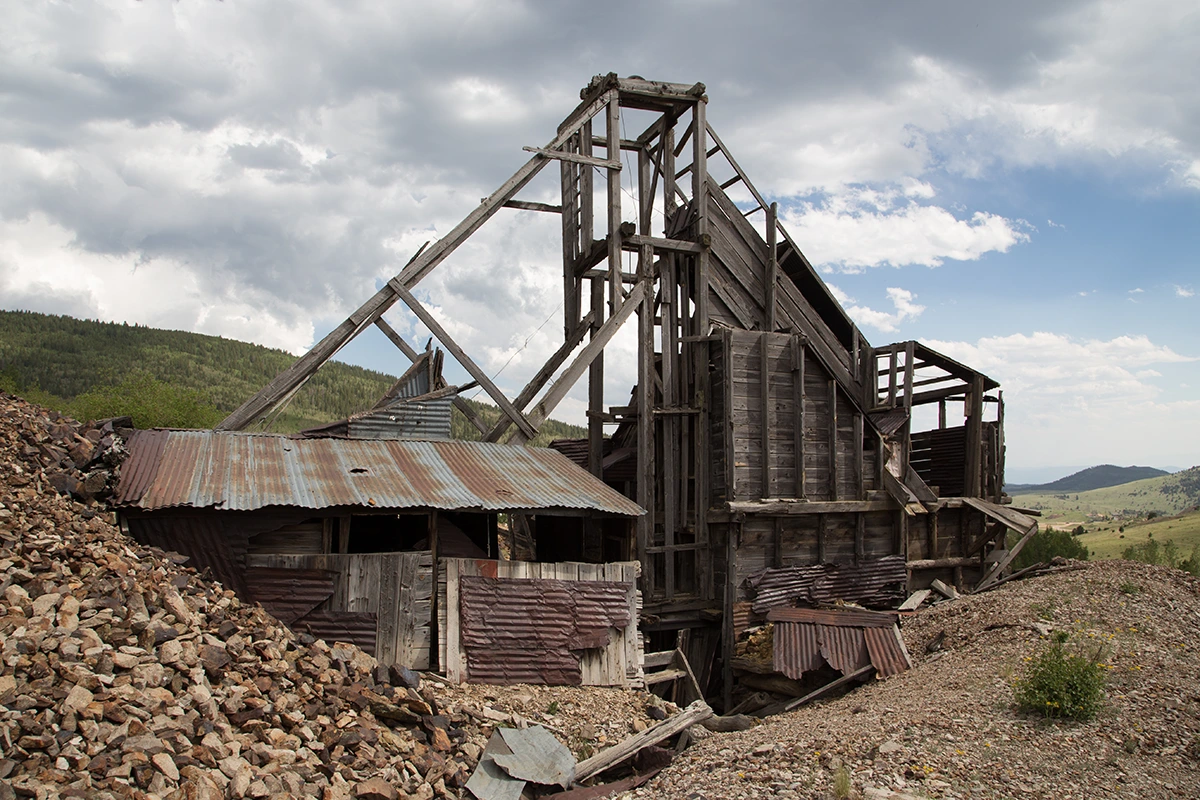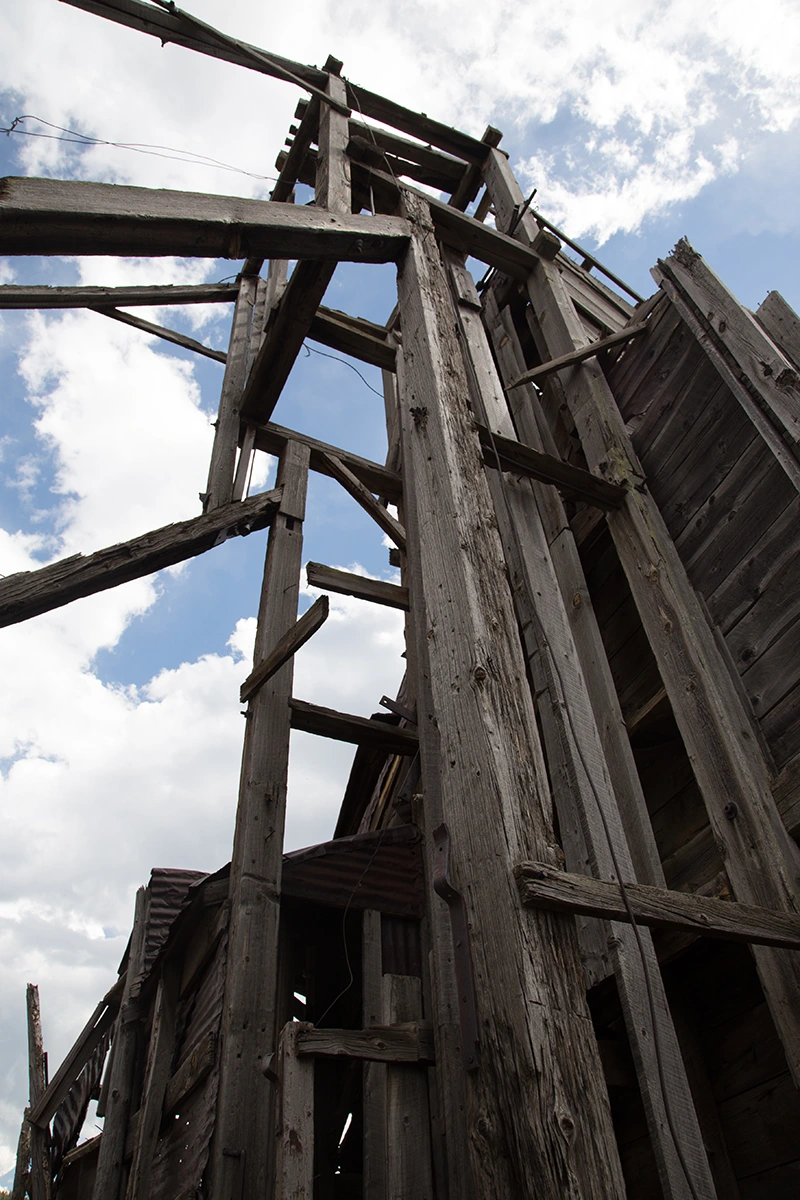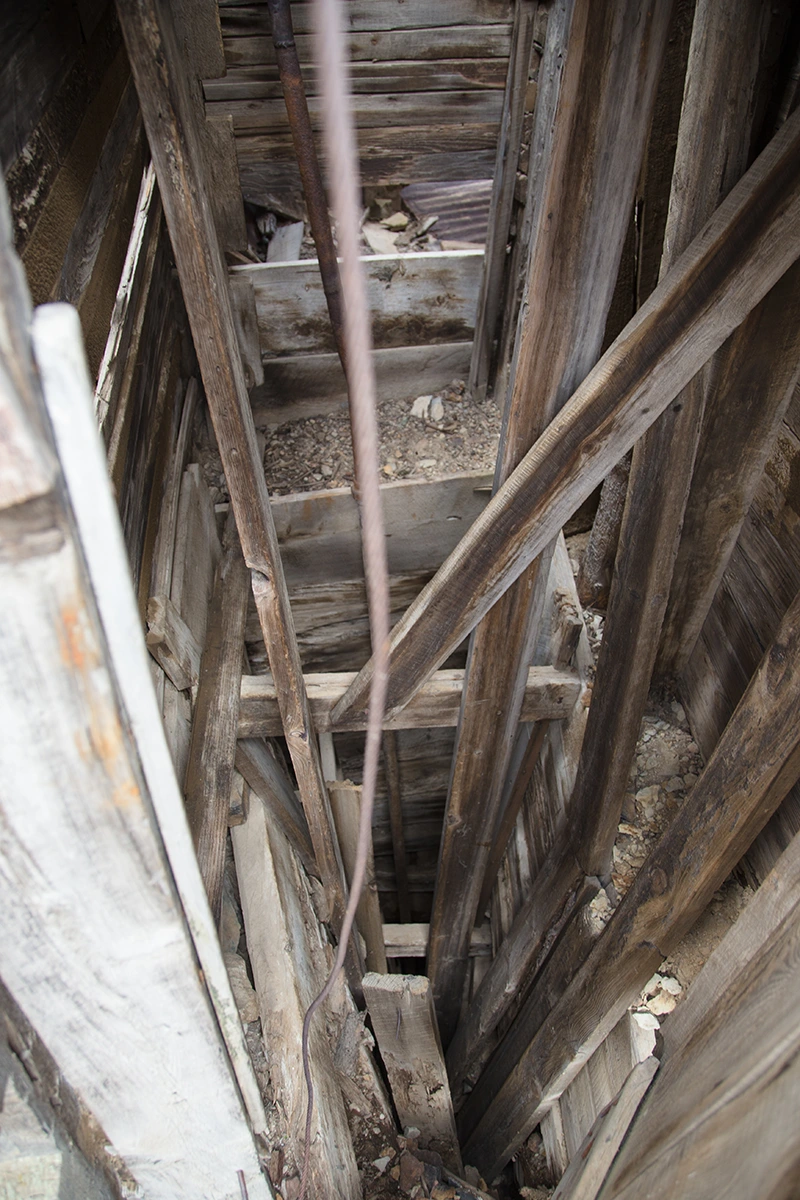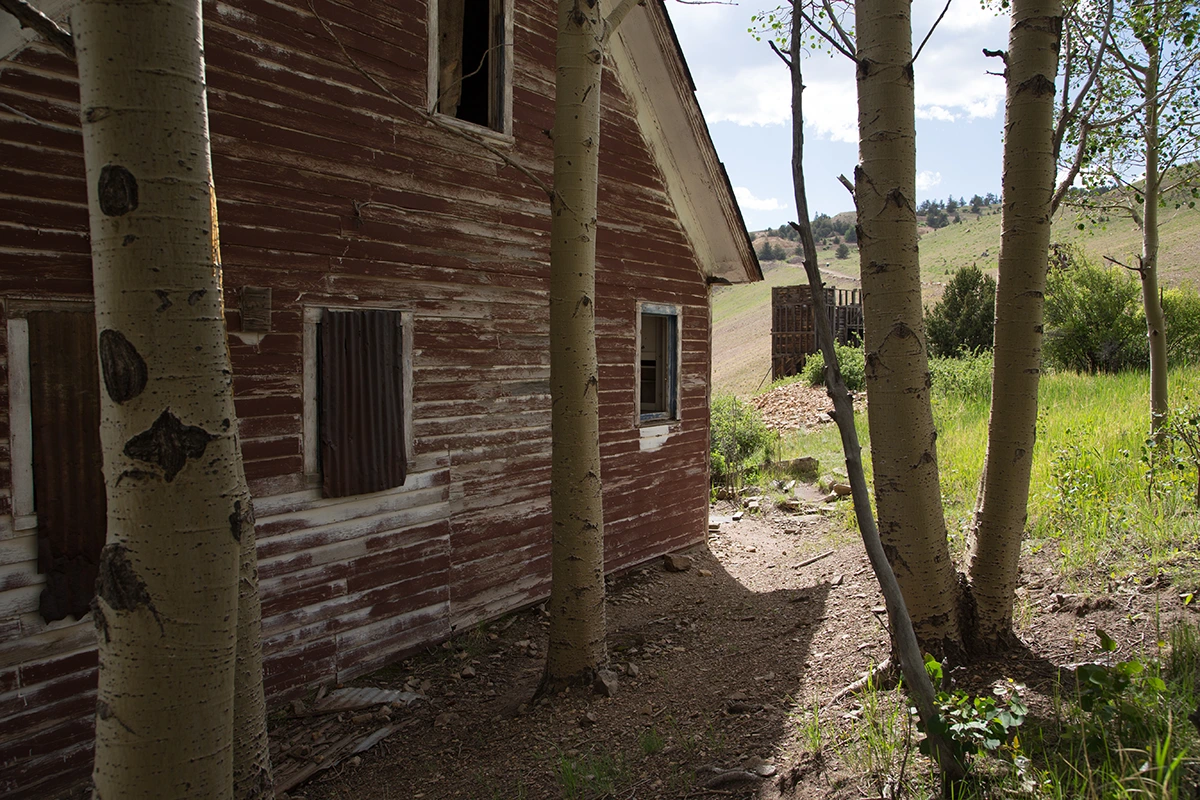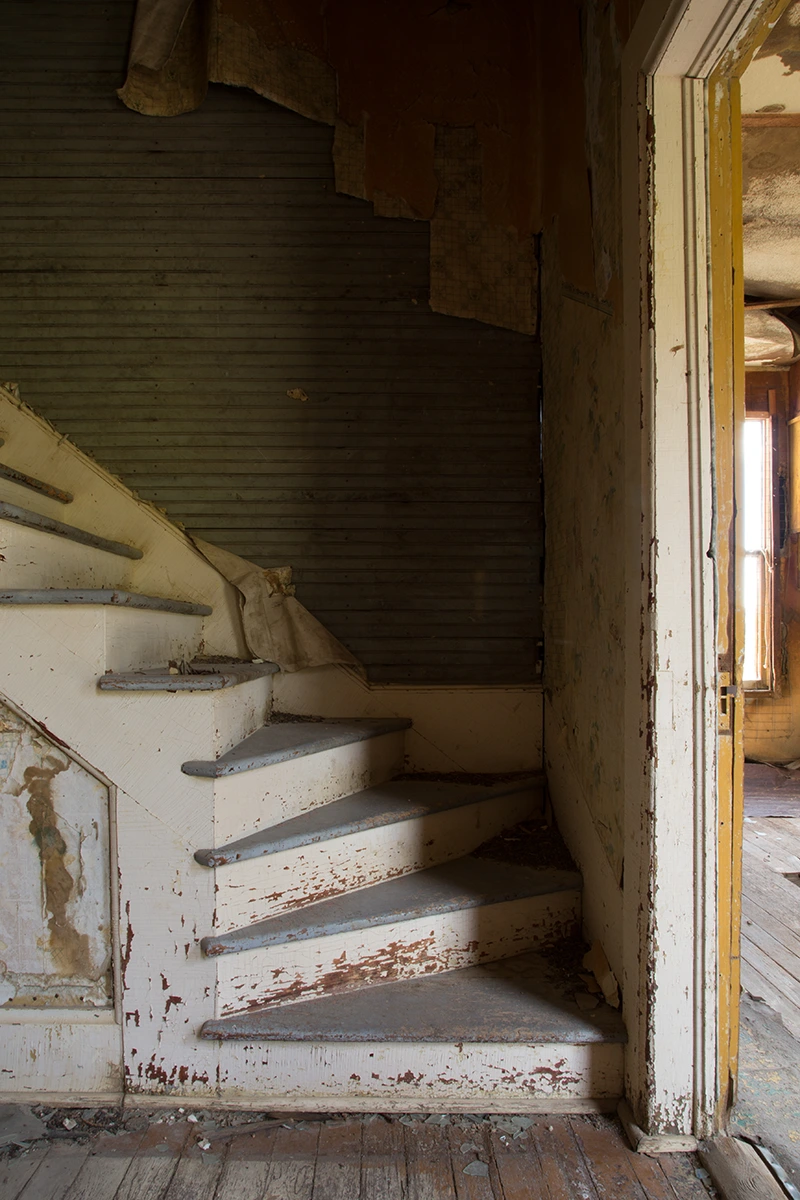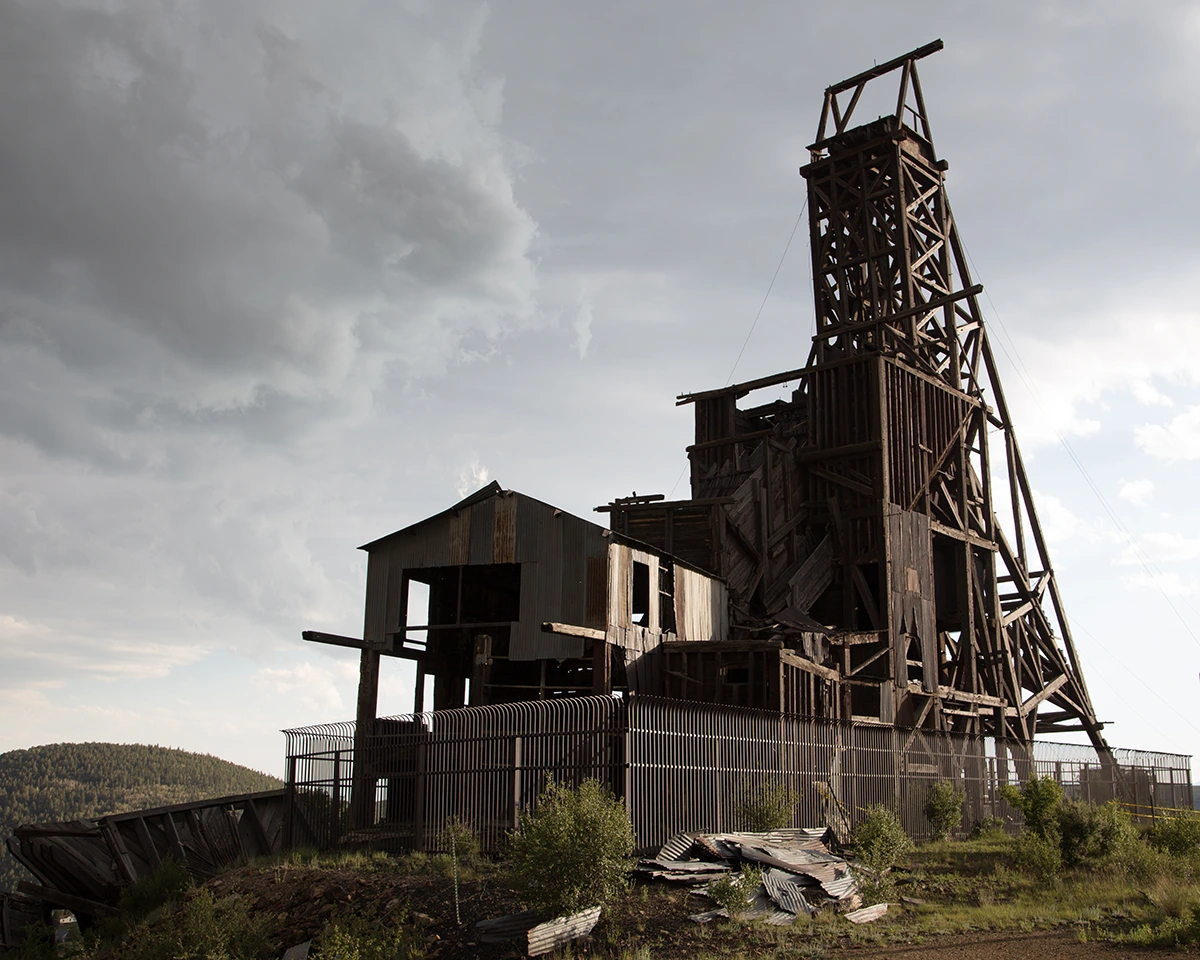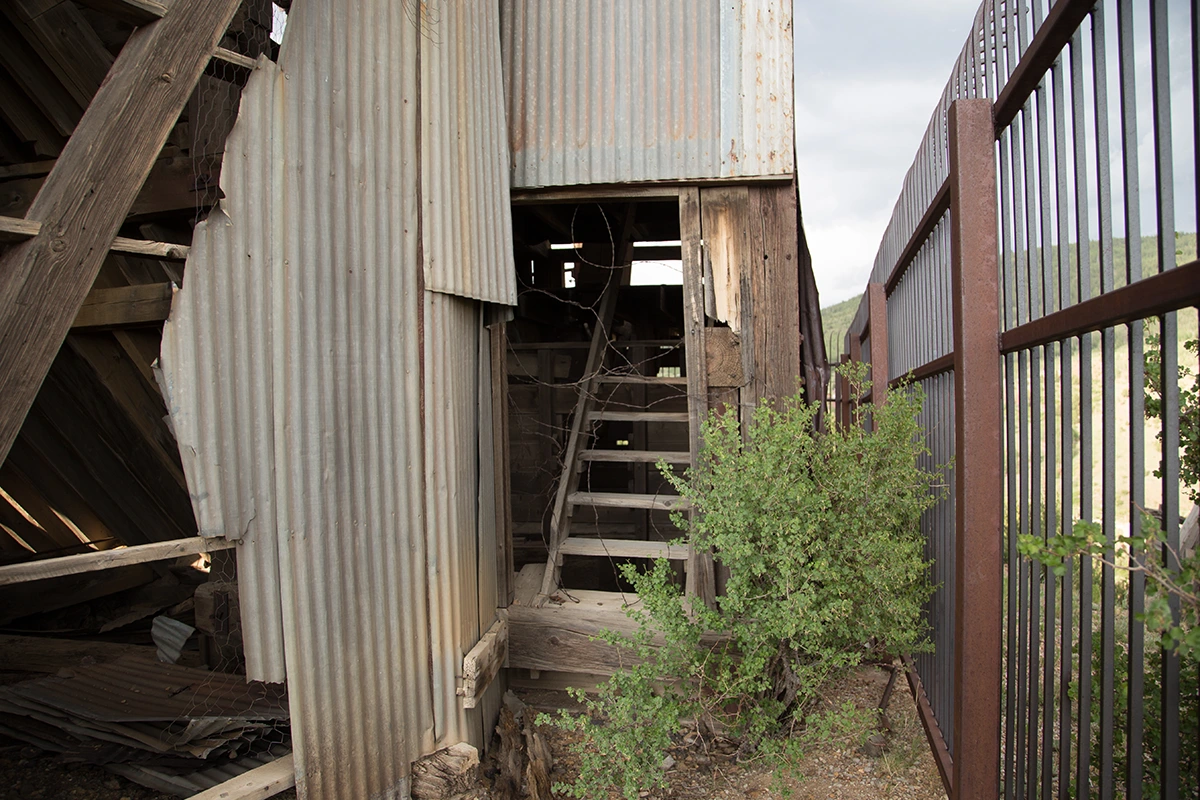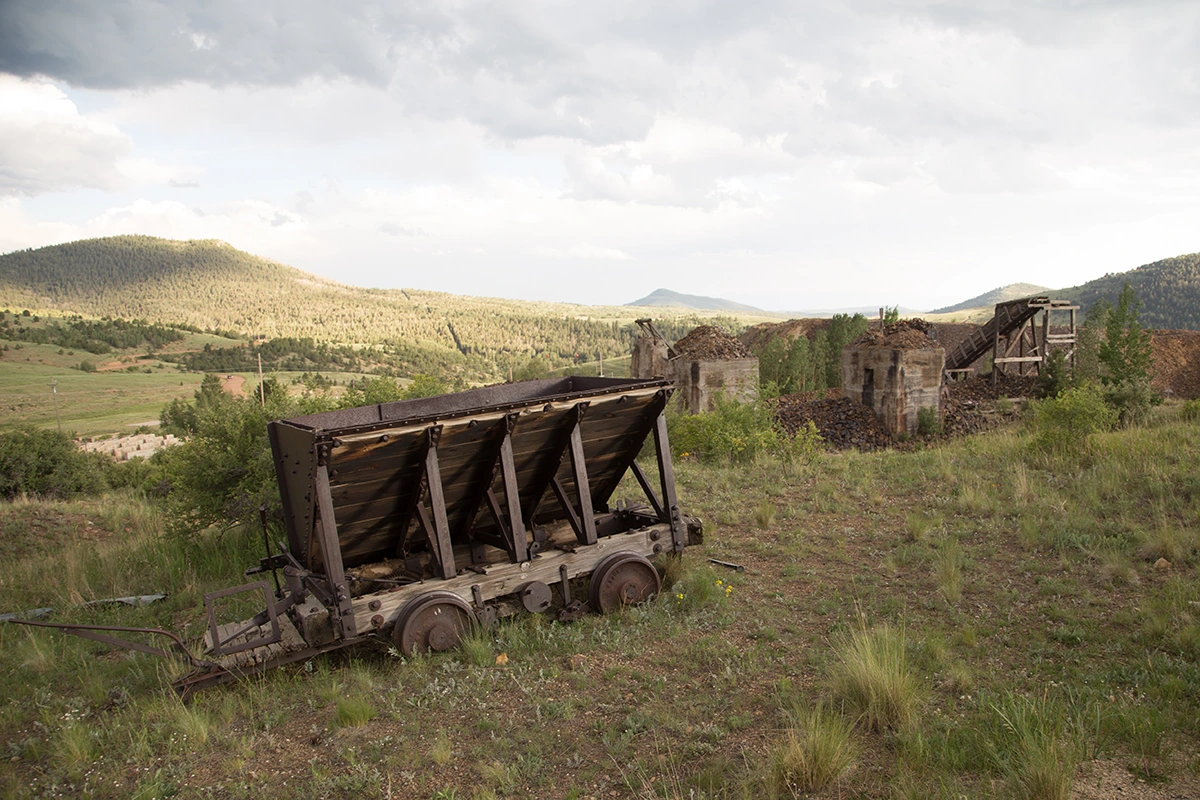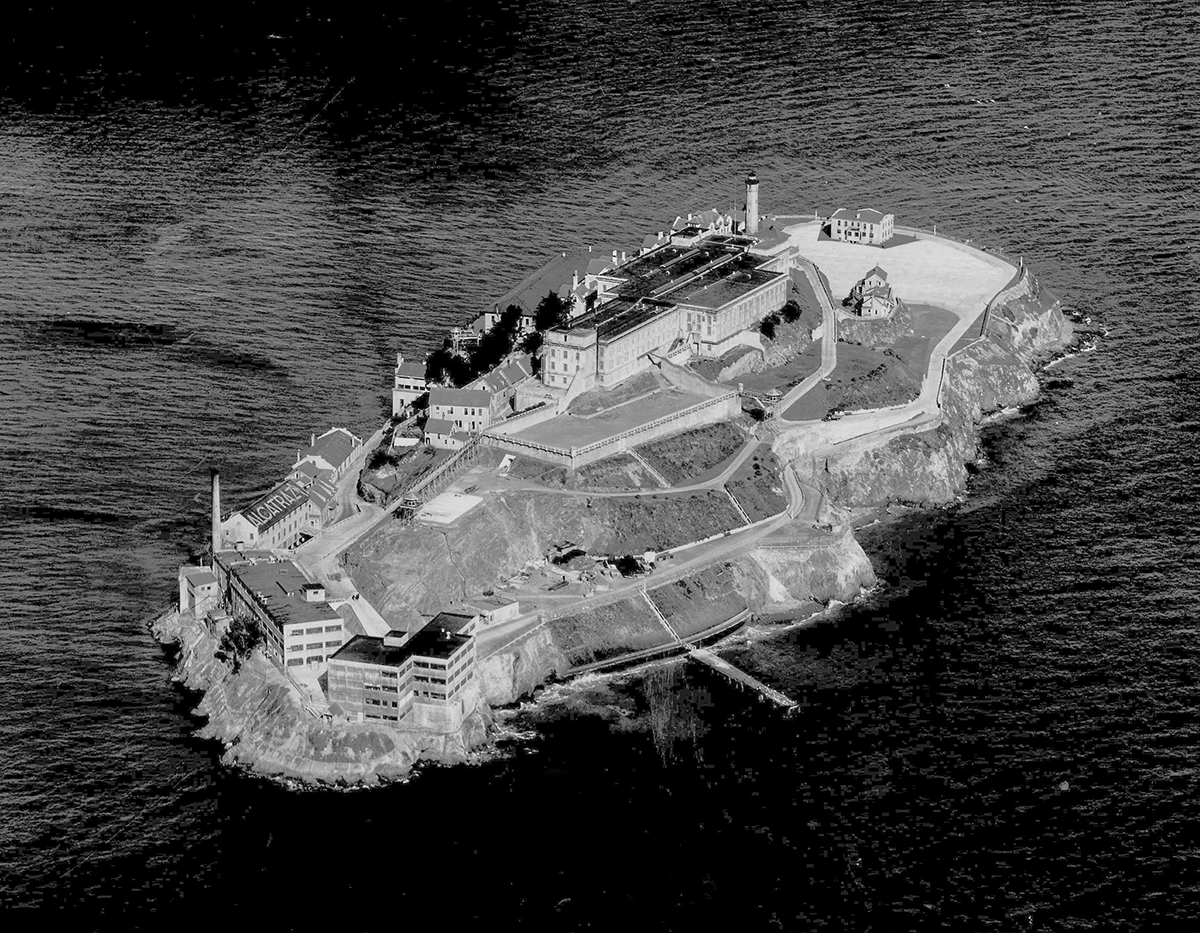Wednesday, August 30, 2017
The Vindicator Valley Trail is a 2-mile hiking trail which loops around a veritable gold mine of... gold mines. Countless gold mining operations set up camp in this valley over 100 years ago. Massive mining operations once dominated the hillside and large towns grew around them. Today there is very little left of both the mines and the towns which supported them. The crumbling ghosts of once mighty industries now dot the hills in silence. Fortunately, the ruins are now preserved in place and visitors can hike the interpretive trail which provides historic information and the chance to witness these awesome relics up close. There's very little left of what used to be but considering the alternative, it's incredible that there's anything left at all-especially when you consider these old wooden structures are 100 years old.
Since gold mining started here in the 1890's, over 23 million ounces of gold have been recovered from the district. At current prices ($1300 per troy ounce), this would be worth around US $30,000,000,000 ($30 billion..). Gold mining ceased for some time but resumed in 1991 with one of the largest such mines in the country. The current mine is an open pit mine which is constantly gobbling up all the land around it, including the old underground mines which preceded it. To their credit they have relocated some surface structures for preservation but it seems they have also destroyed various others, to the frustration of many of the locals.
Of the extant structures, the largest is the old Vindicator mine head frame and ore house. The Vindicator Consolidated Gold Mining Company was incorporated December, 1896 and through a succession of consolidations became one of the largest in the area when by the end of 1901 they had produced $3,500,000 in gold and by 1906 they owned nearly 80 acres in the heart of the valley. By 1912 they had 12 miles of tunnels to their credit, with about 350 employees and 150 lessees. In 1922 Vindicator was bought out by the United Gold Mines Company. UGM then leased out the properties to independent contractors. The mine closed in 1953, opened briefly for exploration in 1956, then shut down for good in 1958. Total production credited for the Vindicator mine was 1,244,000 troy ounces of gold.
Vindicator was the site of a bloody and decisive incident that took place during a period of labor wars (1903-1904) in the district at that time. During this period, violence between the anti-union mine owners and the unions who were organizing strikes resulted in the deployment of nearly 1,000 National Guard troops (who were secretly financed by the mine owners). Under the leadership of General Sherman Bell, a decorated veteran of the Spanish-American war, military rule was imposed to quash the strike and protect the mines and their owners from violence. As a member of the Western Federation of Miners, Albert Horsely, better known as Harry Orchard, targeted the influx of non-union miners and the companies that employed them with murderous intent. Horsely and an accomplice entered the Vindicator mine through an old unused shaft and rigged dynamite on the 600 level of the mine, setting it to detonate as soon as any miners exited the cart. On 21 November 1903, Superintendent McCormick and shift boss Beck exited the cart to inspect the level for future work when they were killed by the blast.
On 4 December 1903, the governor declared martial law, stating that the county was in a state of insurrection and rebellion. General Bell immediately announced that "the military will have sole charge of everything". Within weeks, the National Guard suspended the Bill of Rights, the newspaper was placed under military censorship, freedom of assembly was not allowed, the right to bear arms was suspended and citizens were required to give up their firearms along with their ammunition. In January 1904, a hoist "accident" in the Independence mine caused the deaths of 15 non-union workers and an explosion at the Independence train Depot (credited to Albert Horsely) killed another thirteen and injured six. The Citizen's Alliance then took matters into their own hands and began expelling all union-friendly civil authorities from town. This lead to a shootout at the Miner's Hall between the union miners and the National Guard which lasted for over an hour before the union members surrendered. The Citizen's Alliance then wrecked the hall and all other halls and WFM stores in the district. On June 7th, General Bell organized the process of deportation of over 230 union members across state lines. After the complete destruction of the WFM in this district, all mines in the area were subsequently non-union from this point forward. It isn't clear to this day, however, if the actions blamed on the unions were all entirely true or if the mine owners orchestrated much of the violence themselves in order to crush the unions and end the strikes.
The following two historical images give an idea the size of this operation 100 years ago. Note the ore house and head frame visible in these images.
Historic Photos
Vindicator Mine
Theresa Gold Mine
The Theresa Gold Mining Company began in 1895 and operated this mine only until 1900 when it was purchased by the Golden Cycle Mining Company. It was subsequently sold to the Vindicator Consolidated Gold Mining Company, which was then bought and sold again back to Golden Cycle. By 1920, the shaft was 1,620 feet deep and was serviced by a Wellman-Seaver-Morgan double-drum steam hoist which was powered by a 250 hp Babcock & Wilson boiler. In 1934 the entire surface plant burned down. The four-post derrick type limber headframe was replaced by the present steel structure. The plant was upgraded with a metal hoist house, orehouse and change room. It was closed, along with all other mines, during WWII and resumed production in 1946. After alternating between years of production and idling during the course of its life, the Theresa Mine was closed for the final time in 1961 after having produced over 120,000 troy ounces of gold.
Dunham Mine
Note the Ford Model A powered hoist. Easily one of the coolest things I've ever stumbled upon.
Ore sorting near Vindicator
The comparatively small Anna J Mine
Superintendent's Residence
This house was once home to the Alfred Bebee family. Alfred was at one time the superintendent of the Ajax, Cresson, Vindicator and Golden Cycle mines. Eventually he was the superintendent of all mining and milling in the district. The house was occupied until the 1950's when Vindicator shut down.
Independence Mine
Winfield Scott Stratton staked his claim at the appropriately named Independence Mine on July 4th 1891. 3 years later, Stratton became the district's first millionaire. In 1899, he sold the mine for $11 million. Independence had 17 miles of tunnels and reached a depth of 1440 feet and was the third largest gold producer in the district.
Independence mine was the site of the hoist accident that resulted in the deaths of 15 men. One man survived by grabbing a piece of timber at the top of the shaft just before the cage was thrust into the sheave wheel at the top at which point the cable was severed, sending the cage free-falling to the bottom of the nearly 1500 foot shaft. The man was left hanging onto the timber above the shaft until he was rescued.




